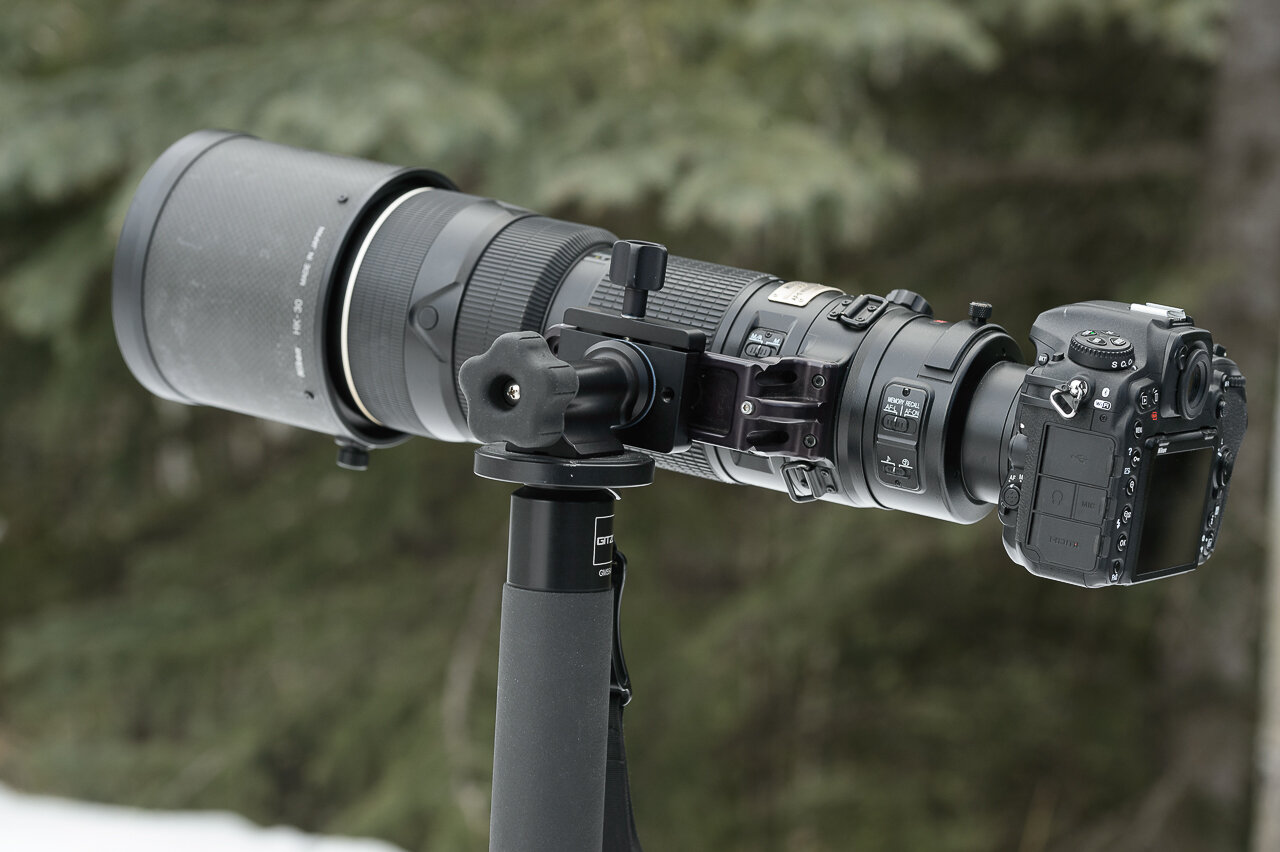I was recently provided a copy of the Wimberley MonoGimbal Head (MH-100) to try out and provide feedback to the good people at Wimberley. I have no affiliation with Wimberley other than the fact that I purchased their Wimberley Head II and some of their quick release plates in the past and have found these products to perform very well. A bit of background I wanted to share though is that shortly after purchasing my full sized WHII I lost a knob from the head somehow. I made a call to the service department at Wimberley to order a new one. I was blown away by the courtesy of the staff during that single call and by the great aftercare I received, they sent me a new knob free of charge and I received it within a couple of days - that’s service.
But, this is a review of Wimberley’s new Monopod head. I originally purchased a Gitzo GM 5541 monopod with a RRS MH-01 Monopod Head with a view to use it as a lighter alternative to a tripod and gimbal with my 600 Nikon and/or 200-400 Nikon lenses. I believe it was on my first outing with the setup using the Nikkor 600 G VR lens and a D4 that I had the head flop and leave a nasty cut on my index finger and a gouge in the top of the monopod where the lens made contact. I was shocked at the amount of force that struck the monopod when this heavy rig decided to move! I gained a new respect for the inherent risks of using this setup and I never used the 600 on a monopod again. I have continued to use my 200-400VR lens with a DSLR on occasion, mostly when photographing elk and to a lesser degree for bird photography when I want to hike a distance. I haven’t found a strap or sling device yet that I felt would benefit me for carrying this combination, but I keep thinking about it and investigating alternatives. Here is a photo of the gouge in the top of my monopod when I flopped my 12 pound 600 mm lens.
Arrow shows point of impact from lens plate contacting the monopod which occurred PREVIOUSLY when using a regular type of TILTING Monopod Head (NOT the Wimberley Head being tested in this review!!!!)
The newly released Wimberley MonoGimbal Head as shown in the photo below allows for attachment of the lens foot of collared lenses to attach to the side of the monopod. This initially seemed to me that it would be awkward due to the asymmetry of the affair, but in practice it provides a natural resting place for ones hand while the other hand rests on the lens/camera while shooting. I immediately felt comfortable with this arrangement. I did a 3 hour hike with my 200-400VR lens and Nikon D500 on a snowy trail on the Christmas Bird Count 2019 as a testing ground for the rig. I was impressed with the stability gained over hand holding. The Bighorn Trail I hiked outside Hinton, Alberta winds through heavily forested woods so light was limited. Secondly, the monopod with the head to the side rested nicely over my shoulder and allowed the lens to be supported quite comfortably, something I thought impossible!
The particular lens I have here, the 200-400VR is a quality professional lens, with a 6.2 lb weight to match. It produces some very nice sharp images and is quite versatile over all. The Wimberley Monopod Gimbal will allow me to make better use of the lens I believe. Most of the big names in photography have released a host of next generation lenses and cameras into the market place. I have been eyeing the Nikon 500 5.6 lens as perhaps my next acquisition for example, this head would be a perfect companion product I believe. I suspect that the new lightweight modern Sony and Canon 600 mm lenses that come in at a compact and balanced 3 kg/6lb weight could also be used with the monopod/Wimberley Gimbal head as well, how cool would that be (The latest version of the Nikon 600 is looking a bit chubby these days at 3.8 kg).
One minor issue that I did encounter on the first full day using the Gimbal involved my camera lens collar. After a few hours in the cold I noticed that the collar was becoming quite “sticky” and difficult to rotate the lens from landscape to portrait positions. I suspect that my old lens just needs to have some new lubricants installed by Nikon, rather than this being a negative of the Wimberley Monopod Head per se. However, since the weight of the lens and body is 90 degrees from the axis of the support it does require a functioning and well made lens collar. I know that this same concern regarding the stresses on the lens collar has been raised by some regarding the use of the Wimberley Sidekick as well. I haven’t use that piece of kit, so I can’t comment.
My initial experience with the Wimberley MonoGimbal Head (MH-100) is very positive. It was easy to set up, it looks great in my opinion and most importantly it works well and may have just solved a problem I had with hiking distances with a heavy telephoto lens while doing wildlife photography.

